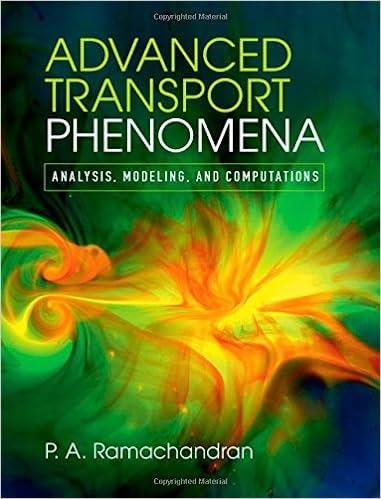A pool of liquid is (10 mathrm{~cm}) deep, and a gas (A) dissolves and reacts in the
Question:
A pool of liquid is \(10 \mathrm{~cm}\) deep, and a gas \(A\) dissolves and reacts in the liquid. The solubility of the gas is such that the interfacial concentration is equal to \(2 \mathrm{~mol} / \mathrm{m}^{3}\) in the liquid and the diffusivity of the dissolved gas is \(2 \times 10^{-9} \mathrm{~m}^{2} / \mathrm{s}\).
Sketch and plot the concentration profile if the gas undergoes a first-order reaction with a rate constant of \(10^{-6} \mathrm{~s}^{-1}\) in the liquid.
Repeat the analysis, if instead of being of first order, the reaction were a zeroth-order reaction with a rate constant \(k_{0}\) equal to \(10^{-6} \mathrm{~mol} / \mathrm{m}^{3} \cdot \mathrm{s}\). Would you expect a depleted zone (gas-starved region) in the liquid? What should the minimum surface concentration be in order to avoid there being a starved zone?
Step by Step Answer:

Advanced Transport Phenomena Analysis Modeling And Computations
ISBN: 9780521762618
1st Edition
Authors: P. A. Ramachandran




